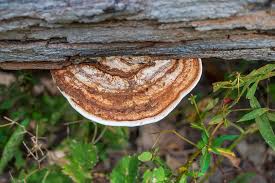Trees make our natural landscape healthy and provide life to many living organisms. Many tree species tend to live longer, but some have a limited lifespan. Have you ever felt like a tree is signalling the signs of decay? But the challenge is how to understand these signs when you can’t identify the tree problems.
This is why calling arborists before tree removal in Warrnambool is necessary to obtain the tree risk assessment report. This report outlines the tree’s condition and determines whether it is safe for surrounding property, trees, or commuters.
In this blog, we will learn what the tree risk assessment covers. Additionally, we will identify the signs that tell whether a tree near your property requires a tree risk assessment report.
Understanding Tree Risk Assessment
A tree risk assessment identifies, evaluates, and manages tree-related issues to protect the surrounding environment. It is essential to conduct one every year to determine whether the tree structure, roots, soil quality, and overall health are in good condition. If left unchecked, diseased or damaged trees can cause major loss.
Fortunately, an arborist in Werribee understands the tree health problems, types of diseases, infections, or other risks that can make a tree fall or lean completely. It is important to consider certified and qualified arborists who can effectively manage the signs and provide tree risk assessment as part of their service.
Signs That Indicate a Need for Tree Risk Assessment
- Visible Signs of Disease or Decay
If you notice fungal growth, discolouration of leaves, or weak barks on a tree, it’s time to call an arborist for a free tree health assessment. These symptoms are early warning signs, and neglecting them can lead to internal tree problems and, eventually, tree death.
Here is how to easily notice these signs of disease:
- Fungal growth like honey-coloured mushrooms near the base or on roots,
- Phytophthora causing root damage,
- White-to-grey powder on leaves can disturb photosynthesis,
- Dead areas on branches or trunks.
While an untrained eye may not detect the type of fungus on a tree, growing mushrooms or brackets, discoloured leaves, or changes in bark texture or colour are the most obvious signs for assessment or complete tree removal in Warrnambool, if necessary.
- Evidence of Pest Infestations
Crawling pests on tree bark and roots may hardly indicate any serious disease. However, when the number keeps on growing, it leaves visual cues that are only detectable through tools and technologies.
Here are a few symptoms that indicate pest infestation of tree species.
- Discolouration on leaves turns them yellow and brittle, weakening the tree over time. This sign indicates that pests like aphids or scale insects are chewing down the tree leaves, requiring your immediate attention.
- Large holes or tunnels in bark and branches indicate severe pest infestation. Borers or bark beetles are the main culprits behind this condition, which is only visible to an arborist in Werribee conducting a close examination.
- Heavy loss of tree leaves disrupting photosynthesis can also signal major pest infestation.
- Mould or general consistent pest activity on trees can also indicate stress and environmental effects on species.
- Damage from Environmental Factors
Major environmental stresses, such as heavy winds, rains, or excess moisture around a tree, can disrupt the tree’s structure and affect its health. Here are all the signs that indicate the need for a tree risk assessment report.
- Trees can lean slightly due to uneven wind pressure, weak roots, or soil erosion. This indicates a risk of falling, especially after major weather events.
- Heavy rains or flooding can reduce soil quality and exposed tree roots. This can further reduce the tree’s ability to obtain the required nutrients and require tree assessment to determine whether complete tree removal is needed or whether pruning is sufficient.
- Nearby Construction Impact
Construction activities near any tree species can accidentally affect the roots’ ecosystem. That is because construction activities involve pressing down the soil, which somehow affects the surrounding trees, their soil and roots.
Here are all the signs that indicate tree risk assessment after any construction activity from a certified arborist in Werribee.
- If the construction involves the use of heavy machines or equipment
- Excavation, trenching or installation of utilities can necessitate tree assessment to identify the impact on a tree’s oil quality.
- Changes in natural drainage patterns.
Potential Risks of Ignoring Tree Health Issues
- Property Damage:
Weak or dying trees are more sensitive to falls during storms or high winds, which can cause significant damage to houses, vehicles, power lines, and other structures. Overgrown or unhealthy root systems can interfere with underground utilities, leading to disruptions in services and costly repairs.
- Safety Hazards:
Unhealthy trees can drop branches unexpectedly, posing risks to pedestrians, traffic, and properties. In some cases, neglecting tree issues can be the reason for a dead tree.
- Legal and Financial Liabilities:
Property owners may face legal penalties for not managing the tree at the right time.
- Loss of Tree Benefits:
Trees provide numerous environmental benefits, including air purification, shade, and habitat for wildlife. Neglecting tree health diminishes these benefits, impacting local ecosystems and urban environments.
Final Words
The health of trees is more than an aesthetic concern; they are the reason behind a safe environment and the protection of many habitats that depend on them. Tree risk assessment helps in identifying early signs of tree diseases, pest infestations, environmental damage, physical damage, or the impact of construction activities.
Now that you know what the tree risk assessment is and why it is crucial, consider this consultation to protect the health and stability of many trees. Remember to read the signs carefully and consult with an arborist from Highline Tree Care before tree removal in Warrnambool to ensure protection against falling limbs.



